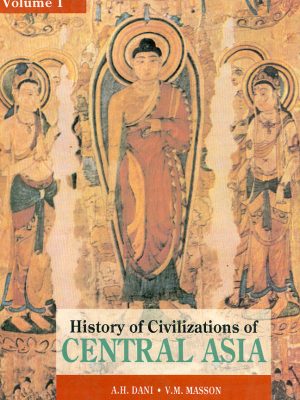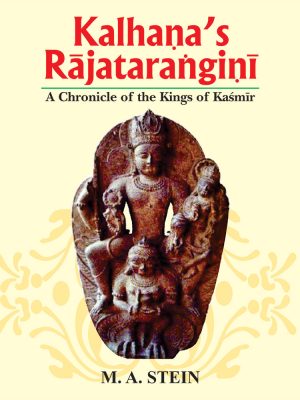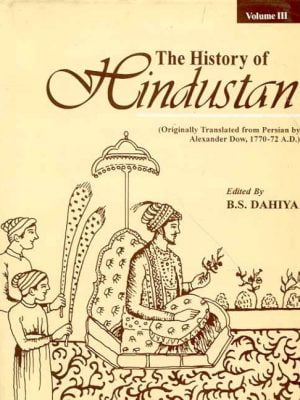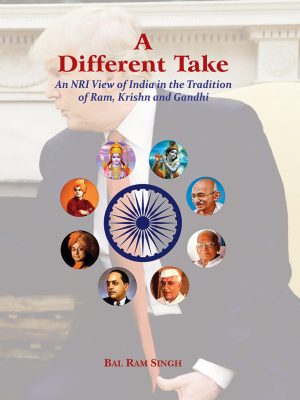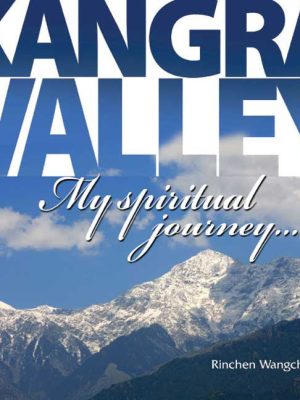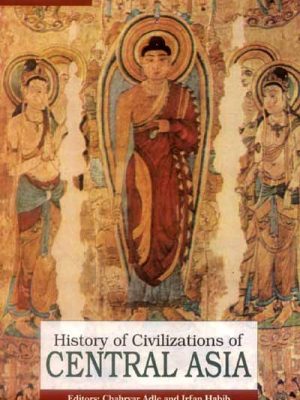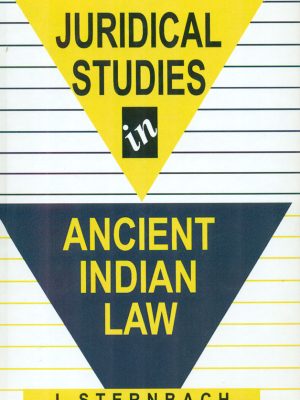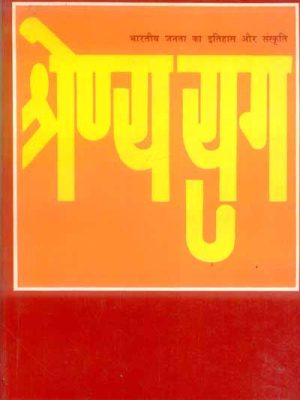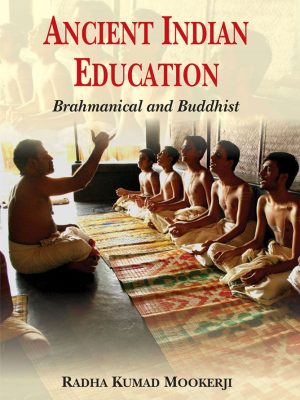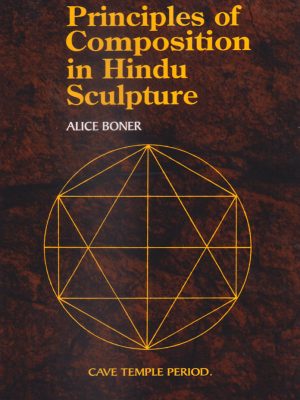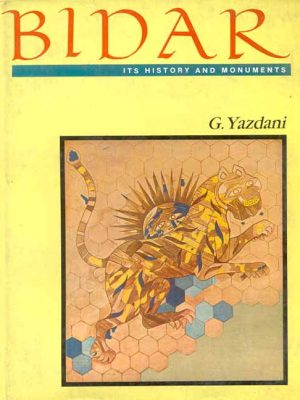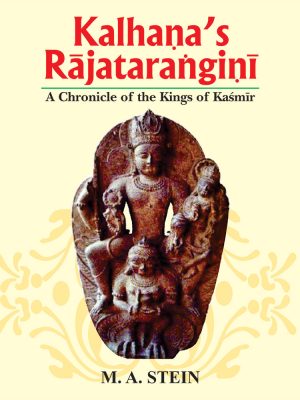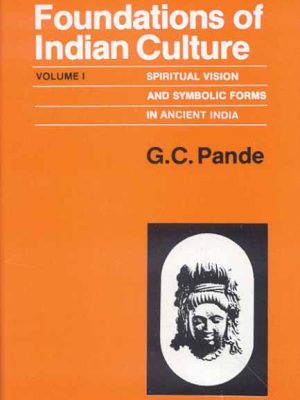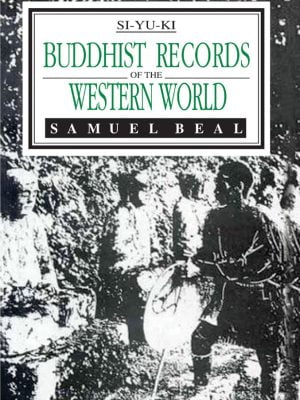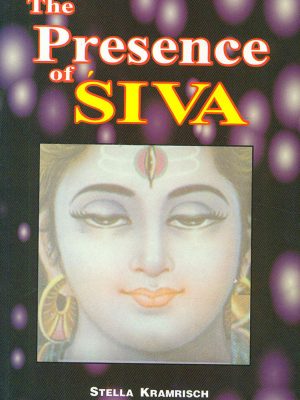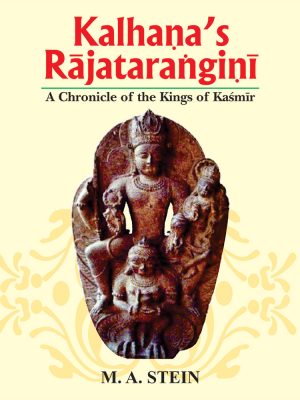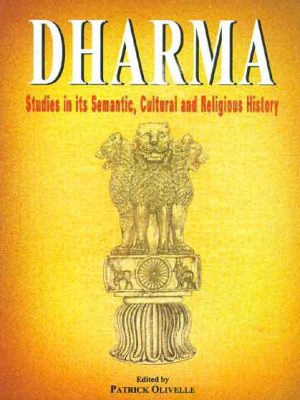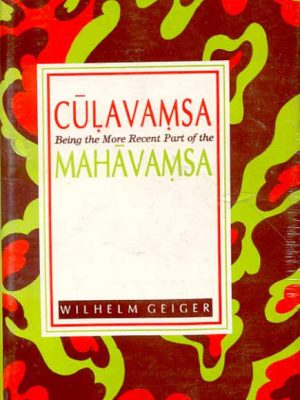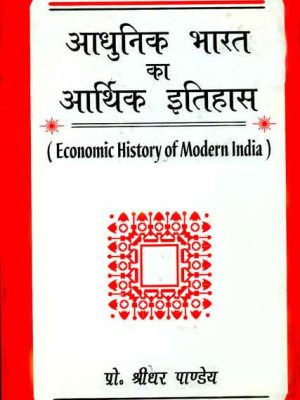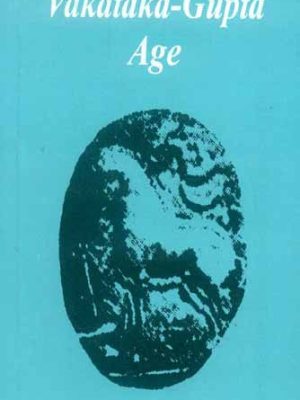History & Culture
Over the centuries there has been a significant fusion of cultures in India. Indian history is a rich mosaic of people and traditions. The political history of this land has been an unending saga of the rise and fall of different empires. The books under this category cast light upon the books to showcase the forgotten culture and history of India. Few books under this category are Education and Social Changes in Bihar, Essays on Vedic and Indo-European Culture, Kingship in Northern India, The Mauryan Polity, and Studies in Mughal History.
-
History of Civilizations of Central Asia: 5 Volumes in 6 Parts (Set of 6 Books)
The multi-volume History of Civilizations of Central Asia is the first attempt to present a comprehensive picture of this subject. The publication of this work falls well within UNESCO’s terms of reference since the underlying research was conducted by a distinguished international team of specialists which for many years laboured in harmony at the task of presenting to a wider public the civilization of this vast area located at the heart of the Eurasian continent. The volumes will reveal the cultures that flourished and vanished in this area, from the dawn of civilization to the present time. Only a few names, such as those of Samarkand, Bukhara or Khiva, are familiar to a wider public; eminent specialists, many of them native to the region, now lift the curtain to reveal a richer, more varied civilization. To a great extent, the history of the ancient and medieval world was shaped by the movements of peoples in this heartland of Eurasia, stretching from the Caspian Sea in the west to the borders of China proper in the east.
₹10,800.00 -
Kalhana’s Rajatarangini (3 Vols.): A Chronicle of the Kings of Kashmir
Kalhana’s Rajatarangini is the oldest and fullest record of Kashmir history. Sir Stein, recognising the inestimable value of the only work of its kind, succeeded in publishing the critical edition of the text as early as in 1892 which has been printed here as Vol. III of this three-volume set. Later he followed this illustrious venture by presenting a fully annotated translation of the Chronicle, in two volumes, printed as Vol. I and Vol. II here, the former containing the translation of the first seven tarangas of the original Sanskrit and the latter that of the remaining eighth tarangas.
₹3,195.00 -
The History of Hindustan (3 Vols.)
The History of Hindustan (3 Vols.)
The book is meticulously edited by Dahiya whorendered the original Anglo-Nordic script in modern english without disturbing the original diction and structure and has relied upon the works of Charles Jonston’s the system of Vedanra and on Lawrence Dawson in The Nuttall Encyclopaedia for transliteration and standerdization of spelling of proper names. This book is a must for all Research Centers, Institutes, Universities and Libraries and gives a contemporary account of the Muslim period in India.
₹2,995.00The History of Hindustan (3 Vols.)
₹2,995.00 -
A Different Take: An NRI View of India in the Tradition of Ram, Krishn and Gandhi
Bal Ram Singh, PhD, has been a professor since 1990 and Henry Dreyfus Teacher-scholar since 1997 at UMass Dartmouth (until 2014) and at the Institute of Advanced Sciences (INADS), Dartmouth, Massachusetts. He has been visiting professor at Georgetown University, Harvard Medical School, Yang Ming University (Taiwan), and Jawaharlal Nehru University (India). He is currently the President of the Institute of Advanced Sciences and also the founder of Prime Bio Inc., a biotechnology based company.
Dr. Singh is Founding Director of the Botulinum Research Center, established in 2003 and currently located at INADS. He is also the Founding Director of the Center for Indic Studies at the University of Massachusetts Dartmouth.
Dr. Singh is an alumnus of Kamla Nehru Institute Science and Technology of Avadh University, Ayodhya, India, Jawaharlal Nehru University in New Delhi, India and Texes Tech University in Lubbock, TX, USA.
He has been conducting research on botulinum and tetanus neurotoxins, and also on yoga, mind and consciousness. He has published 13 books and over 300 articles, including articles related to India’s philosophy and traditions. He is Editor/Associate Editor of four journals, including Ayurveda Journal of Health and International Journal of Indian Culture and Business Management, Ayurveda – Health Happiness And Harmony Book Series, Motilal Banarsidass.
₹2,600.00 -
Kangra Valley: My Spiritual Journey…
The Kangra Valley in the state of Himachal Pradesh, India, is one of the most fascinating travel destinations in the region, both for its spiritual sites as well as the spellbinding landscape. This amazing landscape is home to many religions, most notably Tibetan Buddhism and Hinduism, Christianity and Sikhism. Much like other regions in the Himalayas, this convergence of spirituality has given rise to a special culture, which can be seen in the day-to-day activities of the communities living here. Its given a sense of harmony and strength in the region for thousands of years and it resonates all across Kangra Valley.
₹2,200.00Kangra Valley: My Spiritual Journey…
₹2,200.00 -
History of Civilizations of Central Asia (Vol. 5)
The volume continues the History of Central Asian Civilizations from c. 1500 to c. 1850, a period which saw the last medieval empires notably the Uzbeks, Safavids, Mughals and Dzungars, and witnessed the early impact of colonialism. Like the preceding volumes, the present one also deals with all the diverse elements of culture. It describes the last phase of nomadism as a viable system of social organization; the effects on Central Asian economies of the shift of the main lines of international trade from the Great Silk Route to the oceanic routes; the various schools of art; the last great age of classical Persian literature and the growth of Turkic literatures; and, finally, in the religious sphere, the Shi te triumph in Persia, the conversion of the Mongol peoples to Buddhism, and the rise of Sikhism.
₹1,800.00 -
Juridical Studies in Ancient Indian Law (2 Vols.)
The work, in two volumes, contains 40 comprehensive studies on Ancient Indian Law, each of which is an entity in itself. The first volume contains articles on ancient Indian Law proper based on Dharmasastras, the Smrtis and the Arthasastras are liberally illustrated with quotations and references from these sources. These studies deal in particular with the theory and practice of the law of deposit; pledge; suretyship; labour; debts; and marriage. It also deals with the legal position of prostitutes and physicians; legal, fiscal, social and penal privileges; the protection of plants; infanticide and many other aspects of life in ancient India. The second volume deals in particular with the application of law and the manner in which the technical legal rules were reflected in Sanskrit literary works, such as the katha literature. The author comes to the conclusion that the often theoretical legal rules, as included in the Dharmasastras, Smrtis and other sources of ancient Indian Law are faithfully relfected in the Sanskrit classics.
₹1,795.00 -
Shrenya Yug: Hindi Translation of Classical Age
Shrenya Yug: Hindi Translation of Classical Age is authored by R. C. Majumdar, Shivdaan Singh Chauhan.
₹1,495.00 -
Ancient Indian Education: Brahmanical and Buddhist
This work is intended to fill up a gap in the literature on the history of Education, which has not taken adequate account of the unique contributions made by Hindu thought to both educational theory and practice. The work is divided into Two Parts. Part 1 (Chs. 1-12) deals with the concepts and practices of Brahmanical Education on the authority of Veda, Astadhyayi, Arthasastra of Kautilya, Sutra literature and Epics. It discusses the problems of Legal, Industrial and Vocational Edu
₹1,495.00 -
Principles of Composition in Hindu Sculpture: Cave Temple Period
The present study represents an approach to a hitherto unexplored aspect of Hindu sculpture. It deals with premedival sculpture concentrating exclusively on the question of composition have resulted from a careful analysis of the great sculpture of the Rock-Temples at Elura, Badami Mahabalipuram and others of the pre-medival period of the Rastrakuta, Calukya and Pallava Schools.
₹1,495.00 -
Bidar: Its History and Monuments
The town of Bidar, some eighty miles from Hyderabad, flourished as the capital of the Bahmani kings during a hundred years from about the middle of the fifteenth century. It afterwards experienced sundry vicissitudes, and fell into complete decay in the later part of the nineteenth century, its once beautiful palaces and public buildings, formerly the envy of the great cities of India, becoming a neglected mass of debris. Dr. Yazdani, who visited Bidar for the first time in 1915, drew up a comprehensive programme for the thorough repair and conservation of the monuments at Bidar, and the work has been carried out through the enlightened policy of the NizamÍs Government by whose authority the present magnificently illustrated record has been made available. It surveys the physical features, history, and architecture of Bidar in Chapters I-III and thereafter treats in detail the numerous historical monuments, which include rare masterpieces of architecture and ornament in the palace buildings, temples, mosques, and tombs.
₹1,395.00Bidar: Its History and Monuments
₹1,395.00 -
Kalhana’s Rajatarangini (Vol II): A Chronicle of the Kings of Kashmir
Kalhana’s Rajatarangini is the oldest and fullest record of Kashmir history. Sir Stein, recognising the inestimable value of the only work of its kind, succeeded in publishing the critical edition of the text as early as in 1892 which has been printed here as Vol. III of this three-volume set. Later he followed this illustrious venture by presenting a fully annotated translation of the Chronicle, in two volumes, printed as Vol. I and Vol. II here, the former containing the translation of the first seven tarangas of the original Sanskrit and the latter that of the remaining eighth tarangas.
The translation is preceded by a comprehensive and scholarly Introduction in which Stein has endeavoured to elucidate in the first place the data which can be gathered as regards the person of Kalhana, his family and the milieu in which he lived. In the second chapter (of the Introduction) the author has examined as closely as our available materials would permit, the objects and methods which guided Kalhana in the composition of his work, the sources he used for it, and the form which he gave to his narrative. The condition in which the text of the Chronicle has been handed down to us, and the materials the author has used for its reconstitution, are discussed in the third chapter, while the next chapter contains an exposition of Kalhana’s system of chronolgy. In the concluding and longest chapter of the Introduction it has been the author’s object to present a critical summary of Kalhana’s narrative and of the historical data contained in it. The Chronological and Genealogical Tables attached to the Introduction are intended to present in a condensed form the information furnished by the Rajatarangini regarding the date and descent of successive rulers of Kashmir. The Memoir which follows (Vol. II) the Translation and Notes, presents a connected and detailed account of the ancient geography of Kashmir.
₹1,300.00 -
Foundations of Indian Culture: Spiritual vision and Symbolic Forms, in Ancient India (2 Vols)
Foundations of Indian Culture: Spiritual vision and Symbolic Forms, in Ancient India (2 Vols)
The Present volume I deals with the spiritual vision and symbolic forms. Here is has been upheld that the spiritual vision of India had two original aspects, the integral or synoptic vision of the Vedas, and the Sramanic vision of Transcendence. Purnata and Sunyata constituted the two poles round which Indian spirituality revolved. The author not only elucidates this bipolar matrix of Indian spirituality revolved. The author not only elucidates this bipolar matrix of Indian spiritual praxis or sadhana, but also traces its intricate ancient history. He goes on to trace the great symbolic forms-language, myth, science, literature and art-in which this basic vision expressed itself. In all these areas he brings out the basic general principles expressive of inner consciousness rather than present a mere selection of well-known details.
₹1,295.00 -
The Presence of Siva
One of the three Great Gods of Hinduism, Siva is a living god. The most sacred and most ancient book of India, the Rg Veda, evokes his presence in its hymns. Vedic myths, ritual, and even astronomy testify to his existence from the dawn of time. In a lively meditation of Siva-based on original Sanskrit texts, many heretofore not translated-Stella Kramrisch ponders the metaphysics, ontology, and myths of Siva from the Vedas to the Puranas.
Who is Siva? the author asks. Who is this god whose being comprises and transcends everything? None of the pairs of opposites, nor the sum of his uncounted names, defines him. From the down of creation, the Wild God, whose ancient name is Rudra, is Consciousness. He is the Great Yogi, the guardian of the absolute. His actions are the themes of the myths in which his nature unfolds.
By retelling and interweaving the many myths that continue to convey Siva’s presence as a living god in India today, Professor Kramrisch unfolds the paradoxes in Siva’s nature and thus in the nature of consciousness itself. The magnificent sculptures at Elephanta, illustrated at the end of the book, capture in another medium the presence of the god.
₹1,295.00The Presence of Siva
₹1,295.00 -
Kalhana’s Rajatarangini (Vol I): A Chronicle of the Kings of Kashmir
Kalhana’s Rajatarangini is the oldest and fullest record of Kashmir history. Sir Stein, recognising the inestimable value of the only work of its kind, succeeded in publishing the critical edition of the text as early as in 1892 which has been printed here as Vol. III of this three-volume set. Later he followed this illustrious venture by presenting a fully annotated translation of the Chronicle, in two volumes, printed as Vol. I and Vol. II here, the former containing the translation of the first seven tarangas of the original Sanskrit and the latter that of the remaining eighth tarangas.
The translation is preceded by a comprehensive and scholarly Introduction in which Stein has endeavoured to elucidate in the first place the data which can be gathered as regards the person of Kalhana, his family and the milieu in which he lived. In the second chapter (of the Introduction) the author has examined as closely as our available materials would permit, the objects and methods which guided Kalhana in the composition of his work, the sources he used for it, and the form which he gave to his narrative. The condition in which the text of the Chronicle has been handed down to us, and the materials the author has used for its reconstitution, are discussed in the third chapter, while the next chapter contains an exposition of Kalhana’s system of chronolgy. In the concluding and longest chapter of the Introduction it has been the author’s object to present a critical summary of Kalhana’s narrative and of the historical data contained in it. The Chronological and Genealogical Tables attached to the Introduction are intended to present in a condensed form the information furnished by the Rajatarangini regarding the date and descent of successive rulers of Kashmir. The Memoir which follows (Vol. II) the Translation and Notes, presents a connected and detailed account of the ancient geography of Kashmir.
₹1,200.00 -
Dharma: Studies in its Semantic, Cultural and Religious History
This is the first scholarly book devoted to the study of the term dharma with in the broad scope of Indian cultural and religious history. Most generalizations about Indian culture and religion upon close scrutiny turn out to be inaccurate. An exception undoubtedly is the term dharma. This term and the notions underlying it clearly constitute the most central feature of Indian civilization down the centuries, irrespective of linguistic, sectarian, or regional differences.
₹1,195.00 -
Culavamsa (2 Pts. in one): (Being the More Recent Part of the Mahavamsa)
Culavamsa or ‘The Little Chronicle’, a thirteenth century work composed by Bhikkhu Dhammakitti in Pali, is a supplement to a much earlier work named Mahavamsa. These are the main sources of the political and religious history of Sri Lanka, the history of King Parakkamabahu being the realkernel. The main subject of the Culavamsa, especially of the first part, Parakkamabahu was the son of the eldest of the three brothers Manabharana, Kittisirimegha and Sirivallabha who ruled over Dakkhinadesa and Rohana in opposition to Vikkamabahu. The present volume is a reprint of the English translation from the German rendering of the work by Wilhelm Geiger in two parts bound in one.
₹1,145.00 -
Adhunic Bharat ka Aarthik Itihas: Economic History of Modern India
Adhunic Bharat ka Aarthik Itihas: Economic History of Modern India
The book discusses the process of colonizing Indian economy, with speared focus on monopolistic trade tactics, banning of Indian products in Britain, transformation of trade after industrial revolution and entry of foreign enterprises in India. It also extend an elaborate discussion on land settlement, revenue policies, commercialization of agriculture, decline of handicrafts, state of irrigation, development of transport and communication and currency. Finally, it evaluates economic impact of British rule and addresses the issue of economic drain from India.
₹1,100.00 -
The Vakataka-Gupta Age
Many text on music dance and drama continued to be written in different parts of India until the 17th century. Between the 12th and the 16th century regional styles emerged. Medieval texts have been discovered in all parts. One amongst these is the Srihastamuktavali belonging to the eastern tradition.
₹1,100.00The Vakataka-Gupta Age
₹1,100.00
